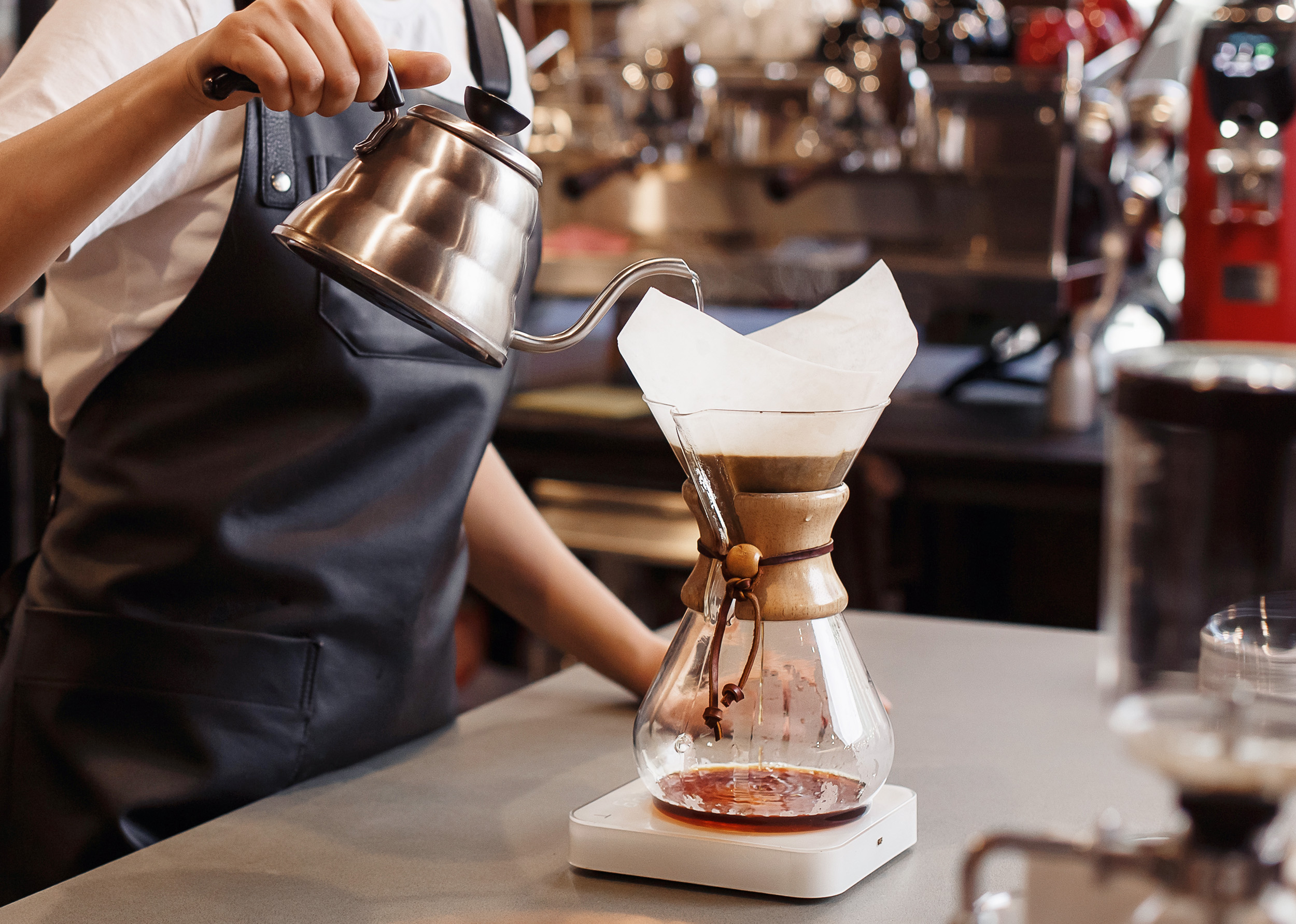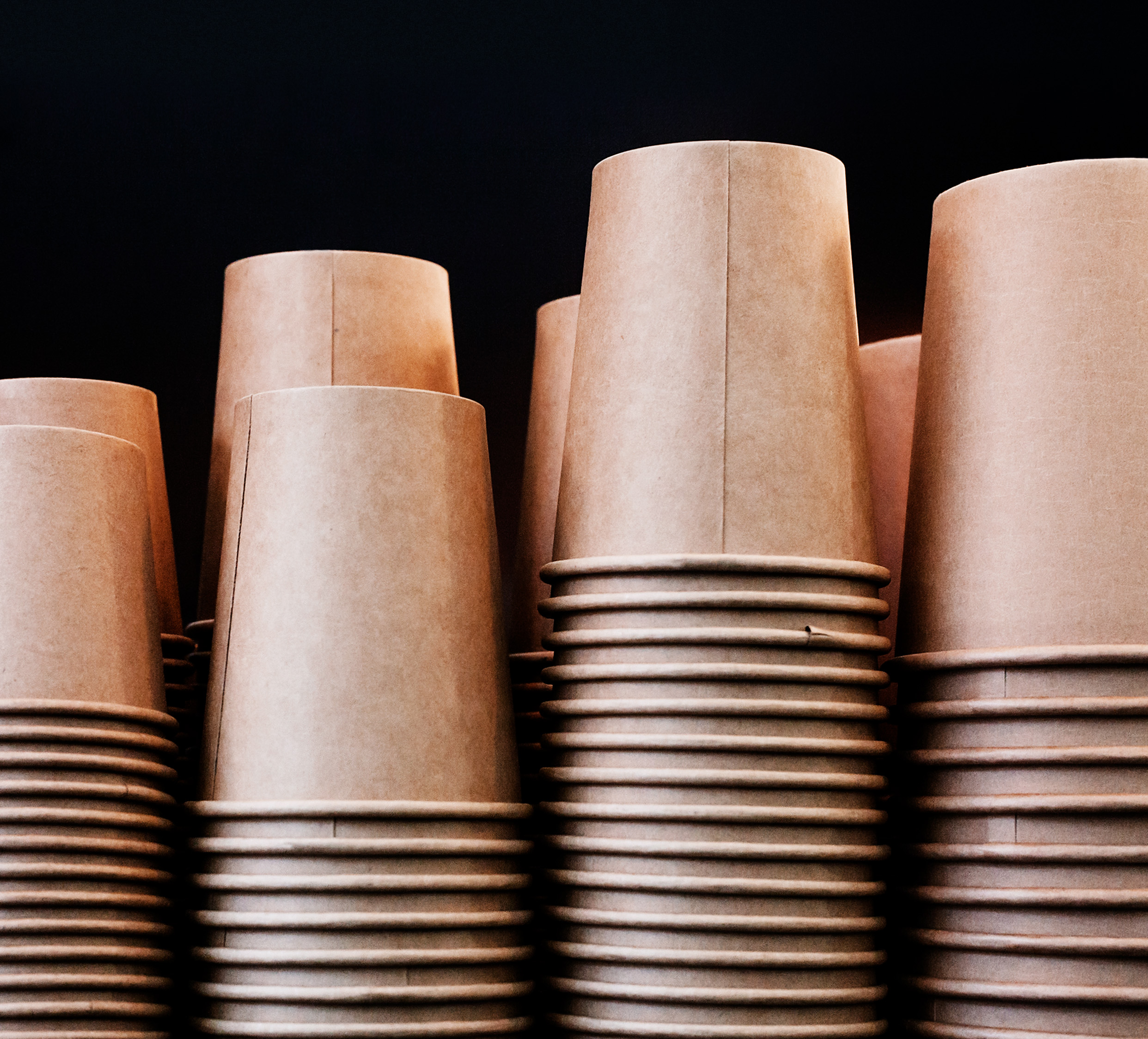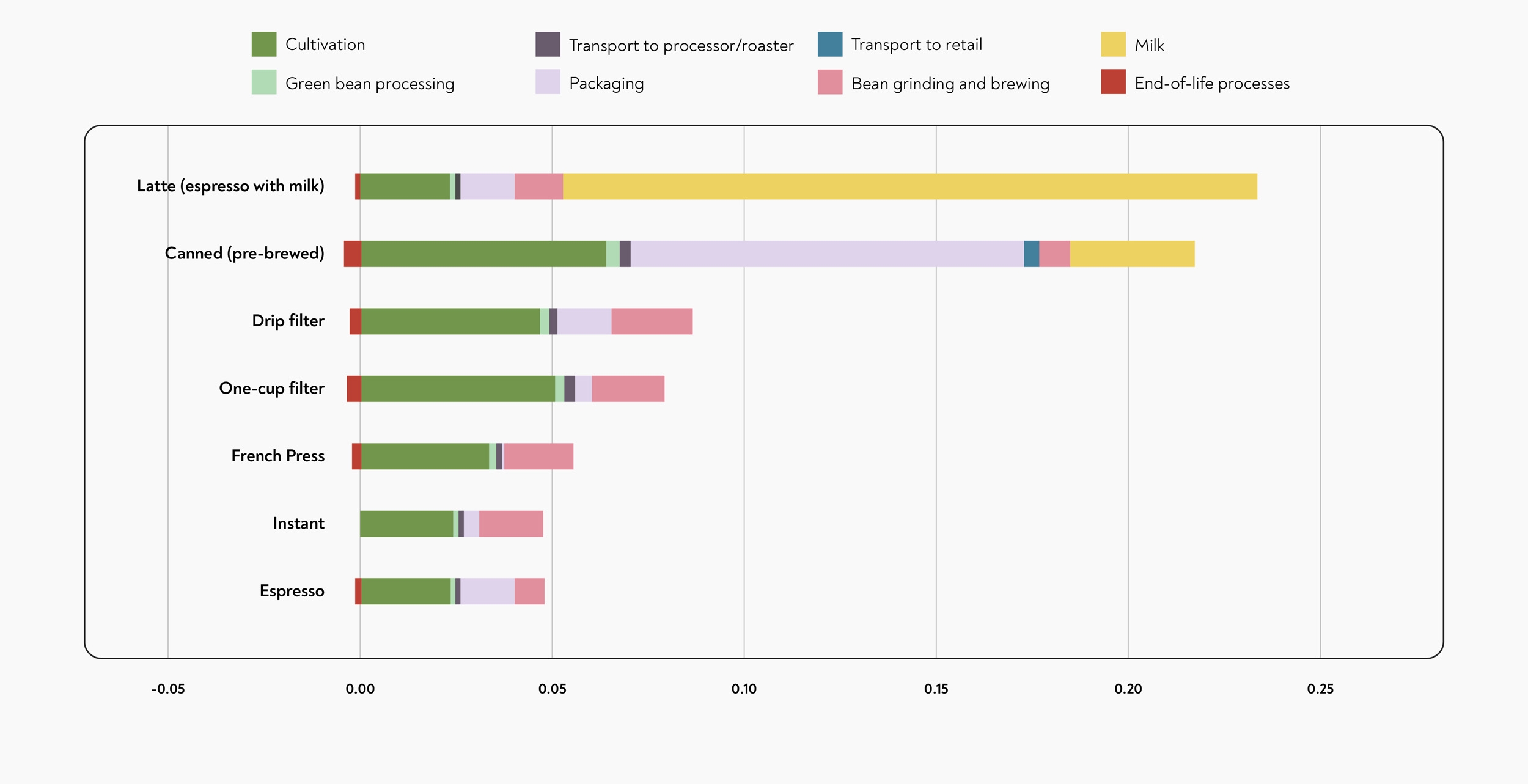Alongside the fertiliser used in growing coffee, the energy used in brewing is the other major contributor to the carbon emissions of a cup of black coffee. The Tchibo study estimated that 30% of the total carbon footprint of a cup of coffee was due to the energy used during brewing (PCF Pilotprojekt Deutschland, 2008).
 The choice of brew method can have a big impact on greenhouse gas emissions.
The choice of brew method can have a big impact on greenhouse gas emissions.
Brewing equipment varies in efficiency. The estimated CO2 equivalent produced for a 125-mL (4.2-oz.) cup of coffee in the Tchibo study ranged from 10 grams for brewing at home, to up to 60 grams for an automatic coffee machine.
Several studies have shown that instant coffee has the lowest carbon footprint of all, despite the extra emissions involved in producing and packaging it. This is largely thanks to the extremely high extraction yields that instant coffee manufacturers can achieve — high temperature processes can extract as much as 60% of the bean, which means that much less needs to be grown to produce the same amount of coffee (AM Sulewska 2018). The other advantage of instant coffee is that a smaller amount of water needs to be heated to prepare it for drinking, compared to typical brewing methods (Heller 2017).
 The greenest cup of coffee you will ever drink. Instant coffee manufacturers are so efficient at extracting coffee that the process produces less greenhouse gas emissions than any other brew method.
The greenest cup of coffee you will ever drink. Instant coffee manufacturers are so efficient at extracting coffee that the process produces less greenhouse gas emissions than any other brew method.
The consumption stage (i.e. the brewing and the drinking) is by far the easiest target for companies in consuming countries that want to reduce the carbon footprint of their coffee. Firstly, the emissions from this stage are much easier to understand than the emissions from production. Changing one aspect of production, such as fertiliser use, can have unpredictable effects on crop yield, indirect emissions, the need for tree pruning, and land use changes, for example. By comparison, calculating the carbon footprint of switching to a more energy-efficient boiler is much simpler.
Secondly, a large part of the emissions at the consumption stage result from wasted resources. Reducing the amount of energy, water, or coffee wasted can have large impacts on the overall carbon footprint of the coffee. (Heller 2017).
A recent life-cycle analysis of coffee consumed in Finland estimated a smaller contribution to emissions from brewing. The Finnish study estimated brewing’s contribution to be 19-45% of a cup of coffee’s total carbon footprint, mainly because Finland uses more renewable and nuclear energy than other European countries (Usva et al 2020). Even in this case, the researchers suggest that ‘the most important issue for a consumer is to avoid wasting coffee’.
Takeaway Cups
Over the last few years, the disposable cup has become emblematic of the environmental impact of a cup of coffee. However, the carbon footprint of a disposable cup accounts for a fairly small part of the overall emissions from producing a cup of coffee. From growing to brewing, an 8-oz. (237-mL) serving of coffee results in about 120 grams of CO2 emissions (PCF Pilotprojekt Deutschland 2008), while a paper cup and plastic lid contribute an additional 15.1 grams (Hassard et al 2014).
 Paper cups have become symbolic of the environmental impact of coffee drinking — yet reusable cups don’t always reduce CO2 emissions.
Paper cups have become symbolic of the environmental impact of coffee drinking — yet reusable cups don’t always reduce CO2 emissions.
Disposable cups may even sometimes be better for the environment than reusable cups, in terms of greenhouse gas emissions. Whether a reusable cup has a smaller carbon footprint than a disposable cup depends on the amount of water and detergent used in washing it and the source of the energy used to heat that water (Heller 2017). In areas that use a high proportion of renewable electricity, washing a reusable cup results in less emissions than using a disposable cup. Elsewhere, whether washing reusable cups is preferable to using disposable cups, depends on the efficiency of the dishwasher. According to Heller, ‘Most studies are generally inconclusive or lean toward disposable options being better’. Most studies show that the lowest emissions come from using ceramic cups in a café, thanks to the efficiency of commercial dishwashers and the low environmental impact of ceramic production. However, even in this case, a cup needs to be used 200–300 times before it becomes more carbon-efficient than using disposable paper cups (CIRAIG 2014).
الحليب
One aspect of the carbon footprint of a cup of coffee that is often overlooked is the contribution of milk or cream. Adding milk can drastically increase the carbon footprint of a cup of coffee — and in many cases, the milk can contribute more emissions than the coffee itself (Heller 2017).
 The carbon footprint of different coffee drinks. Milk contributes most of the carbon emissions of a latte. Source: Heller 2017
The carbon footprint of different coffee drinks. Milk contributes most of the carbon emissions of a latte. Source: Heller 2017
The emissions relating to milk aren’t included in the analysis in BH’s تطبيق LCA, since they vary so much depending on the type of coffee consumed. It’s clear, however, that for a café business, the amount of milk consumed is an important factor in the overall emissions. In the Seven Miles Coffee Company’s analysis of their café business, emissions relating to milk accounted for one-quarter of the overall carbon footprint (Carr 2018). Switching to plant-based alternatives can cut the emissions related to milk by two thirds or more (J Poore & T Nemecek 2018).